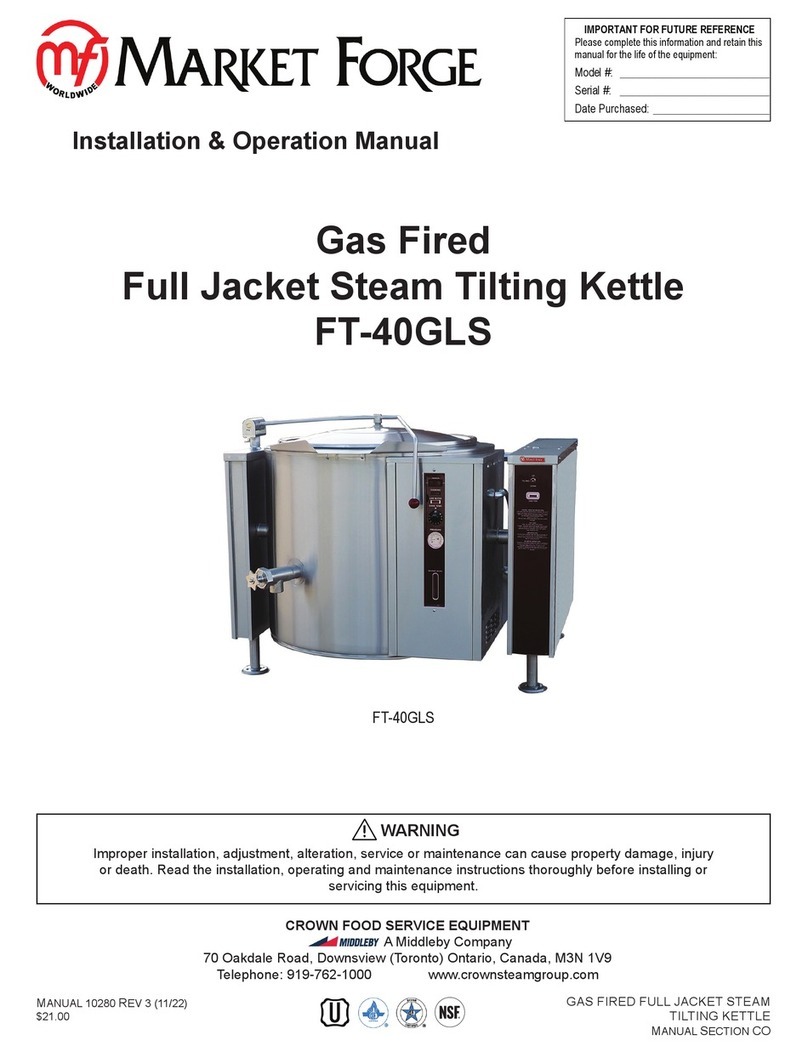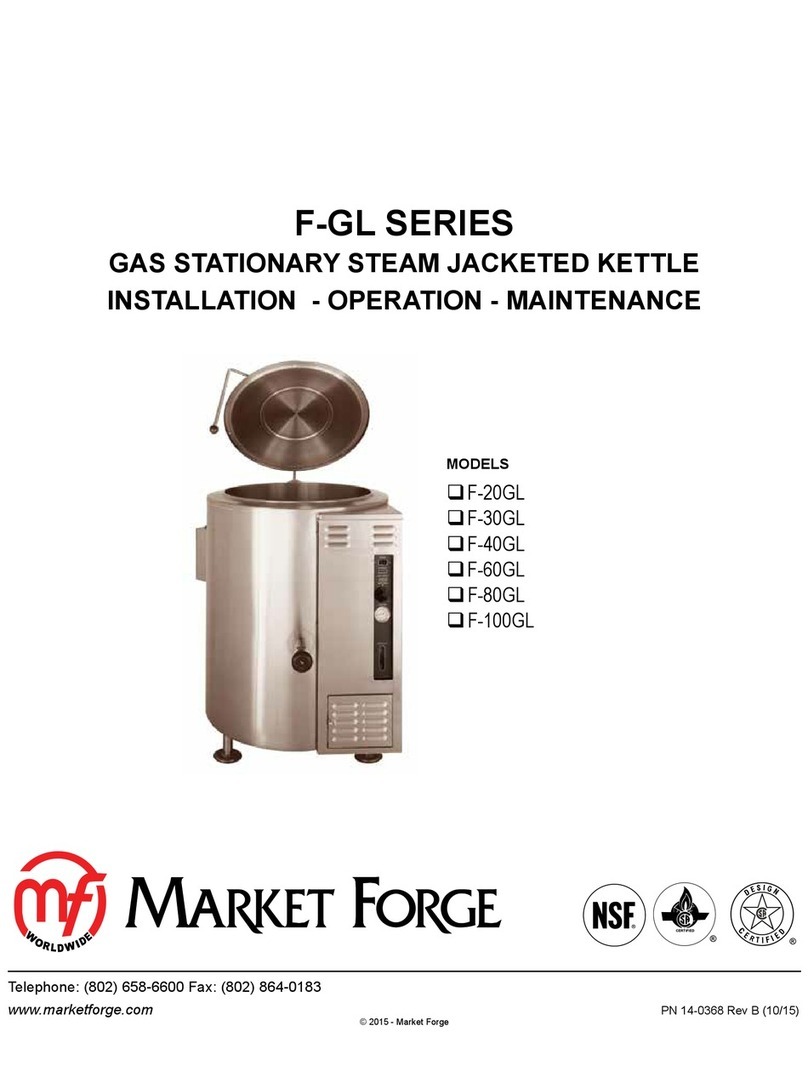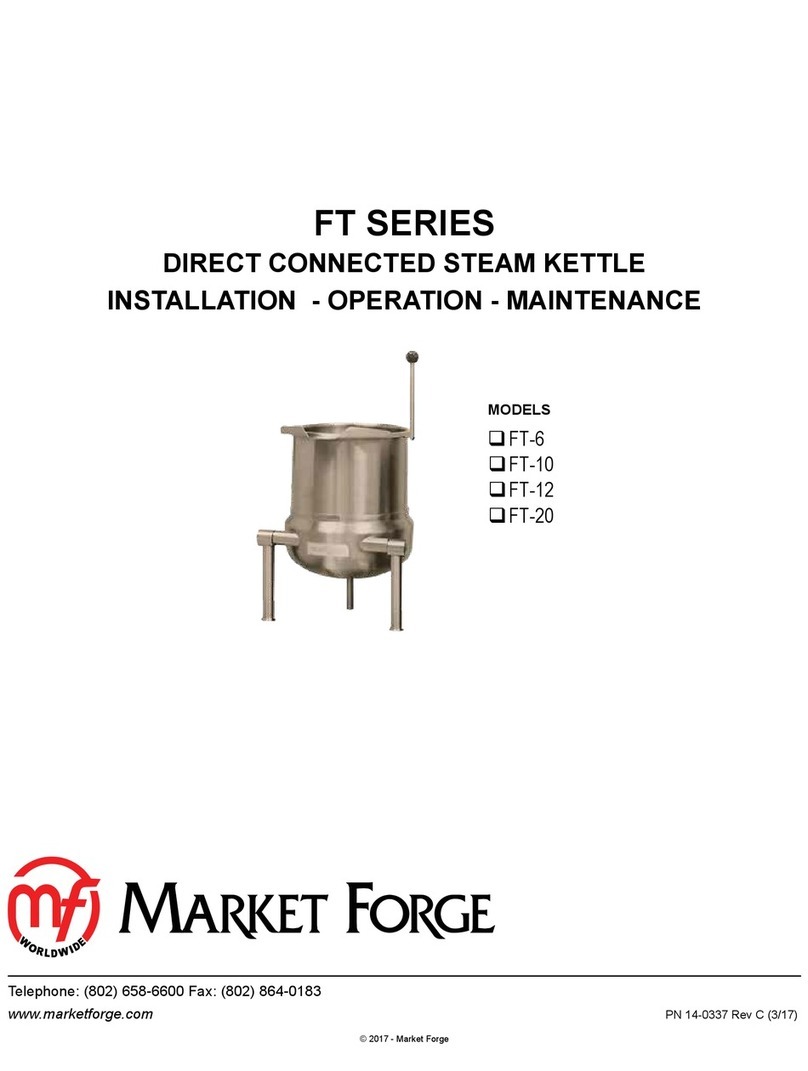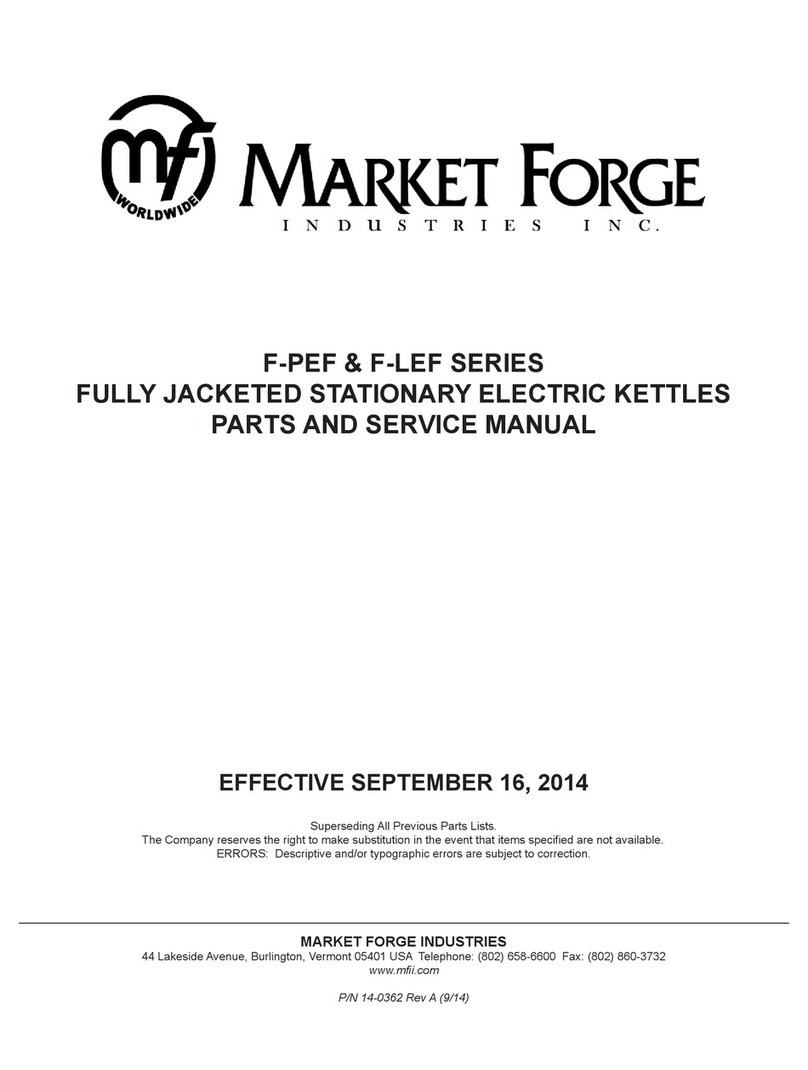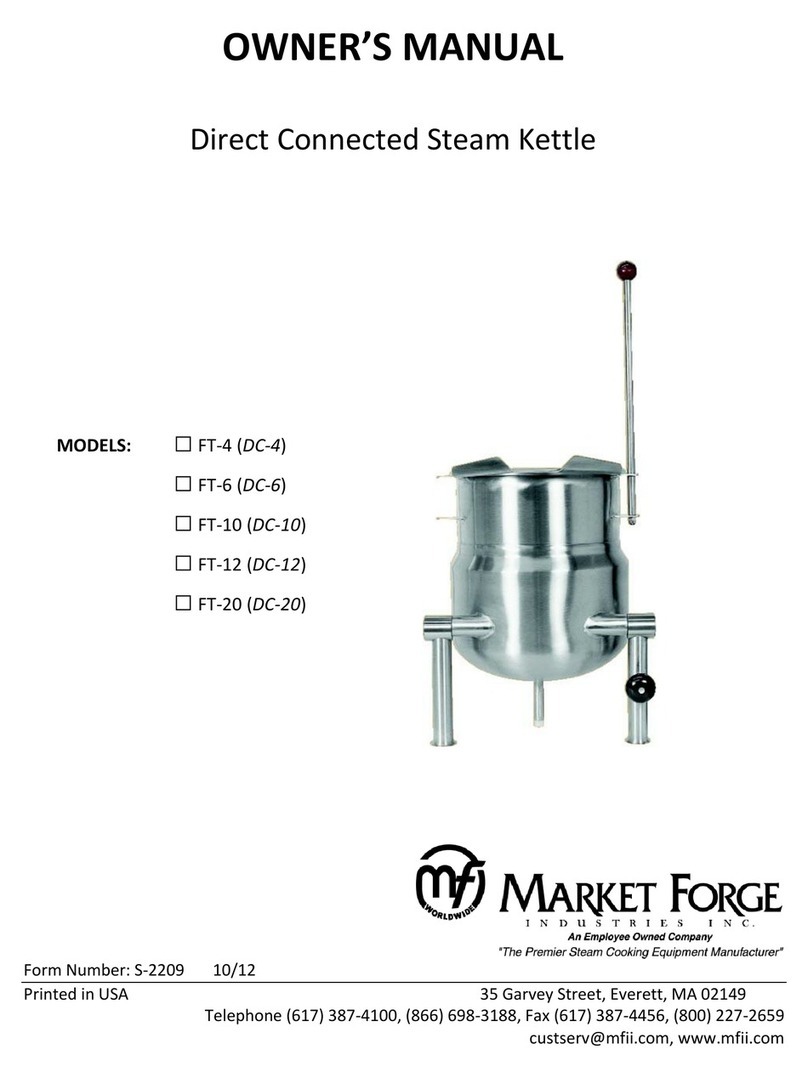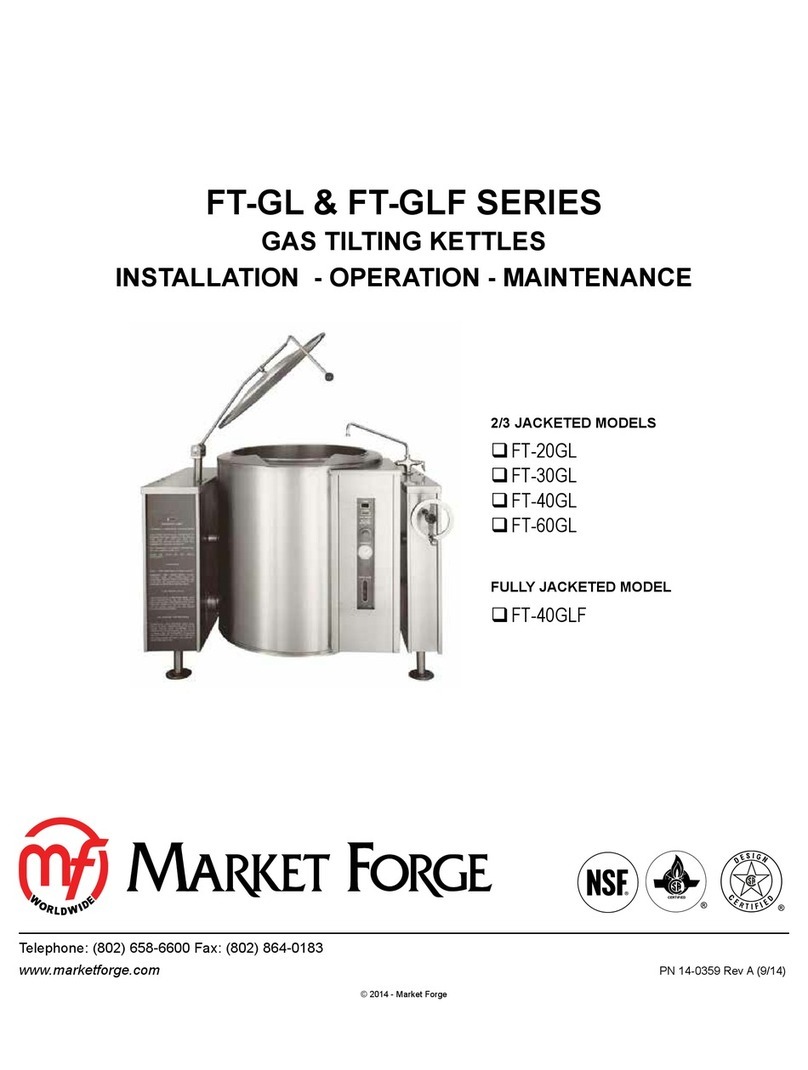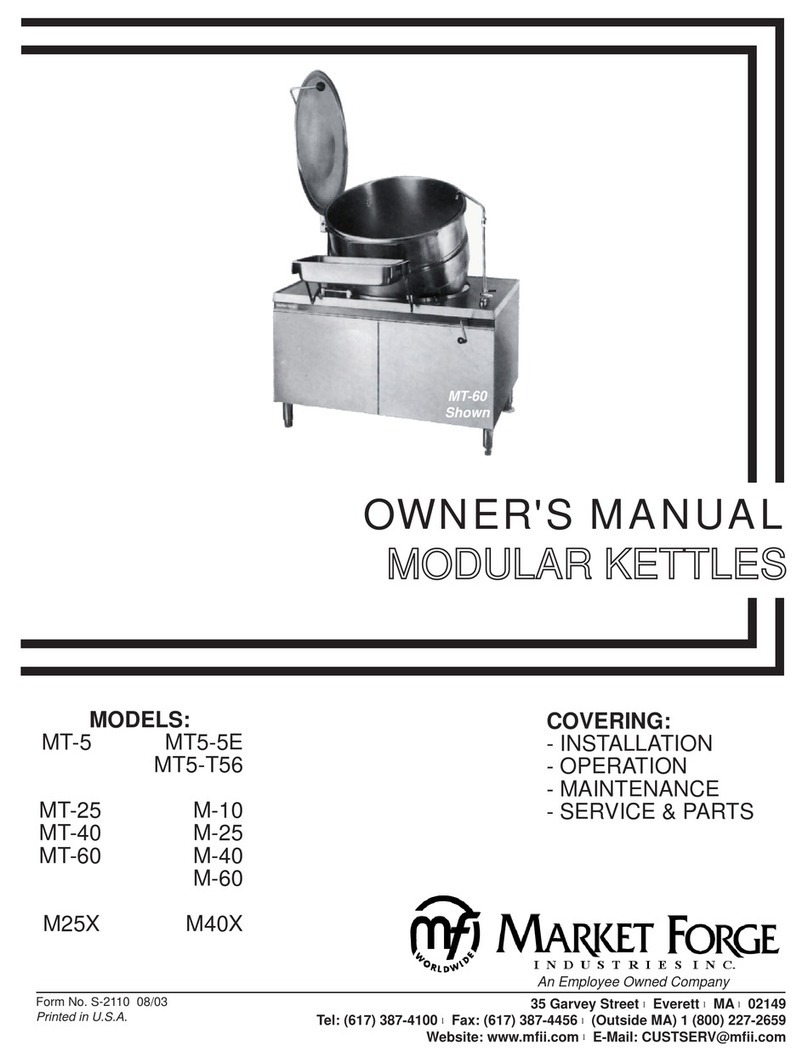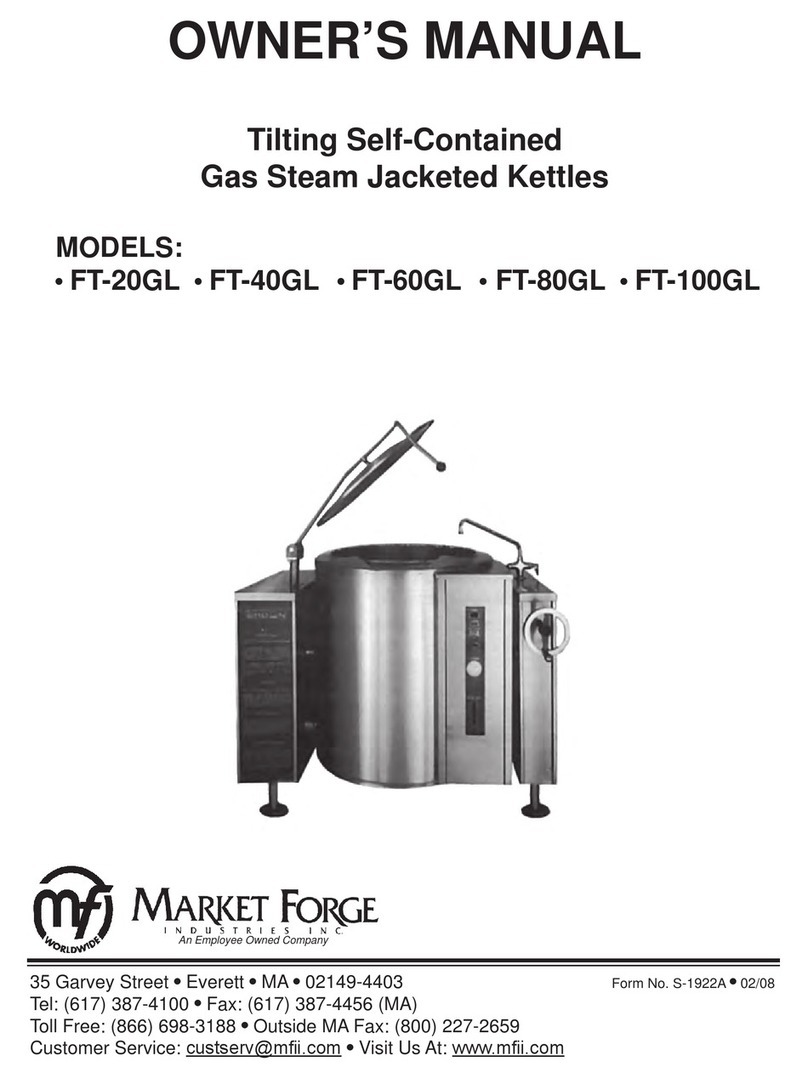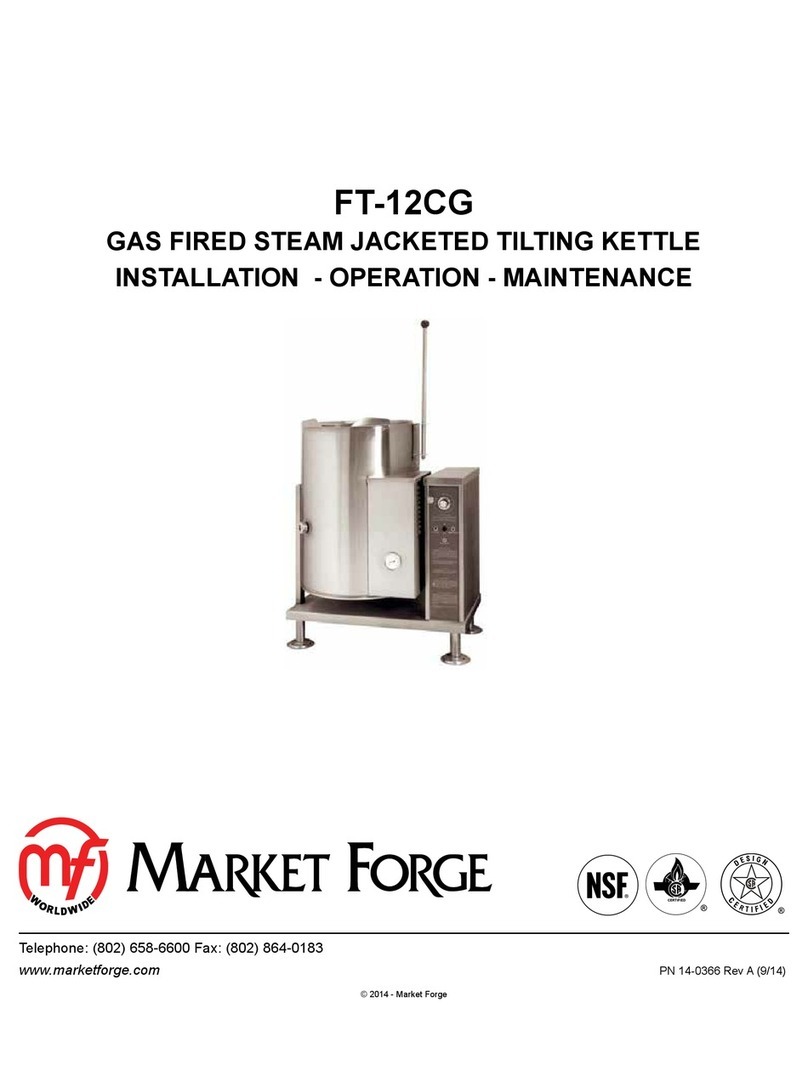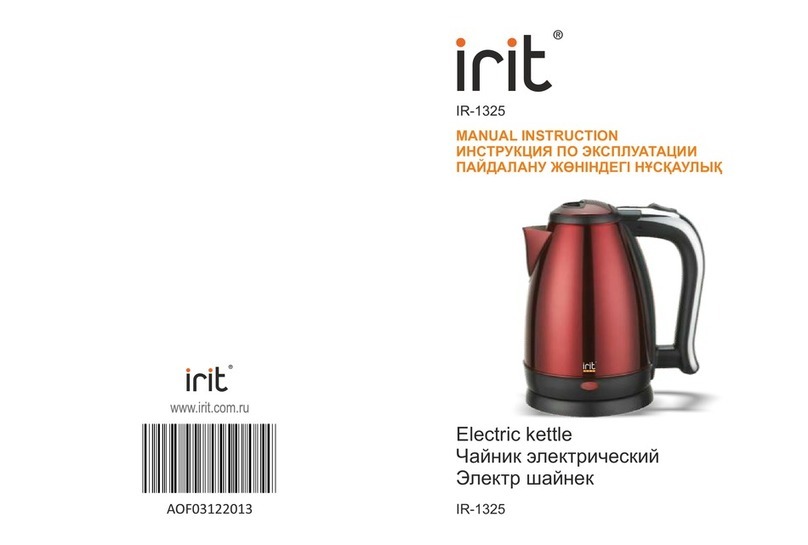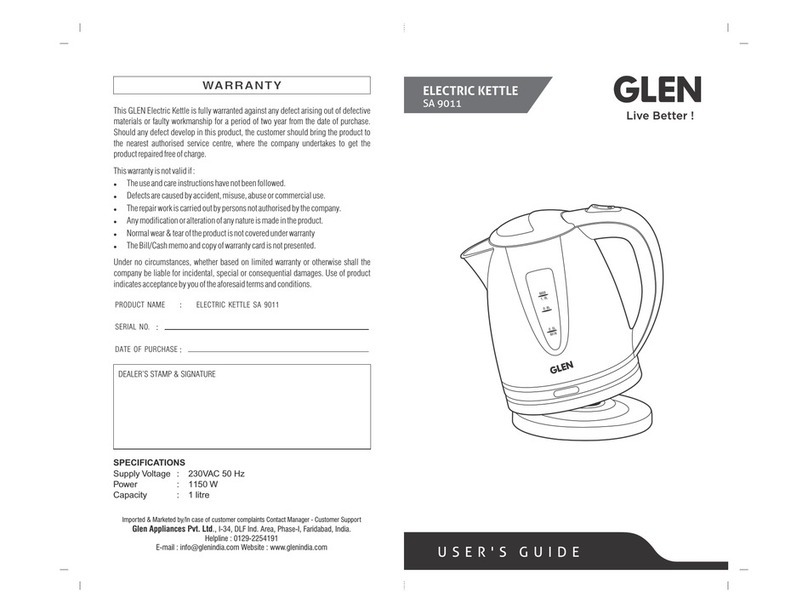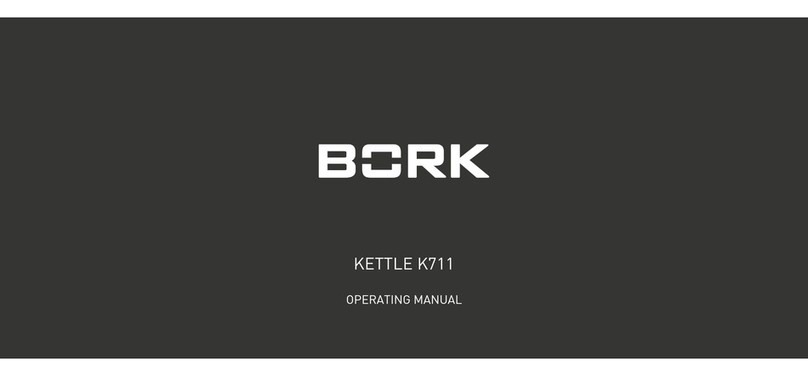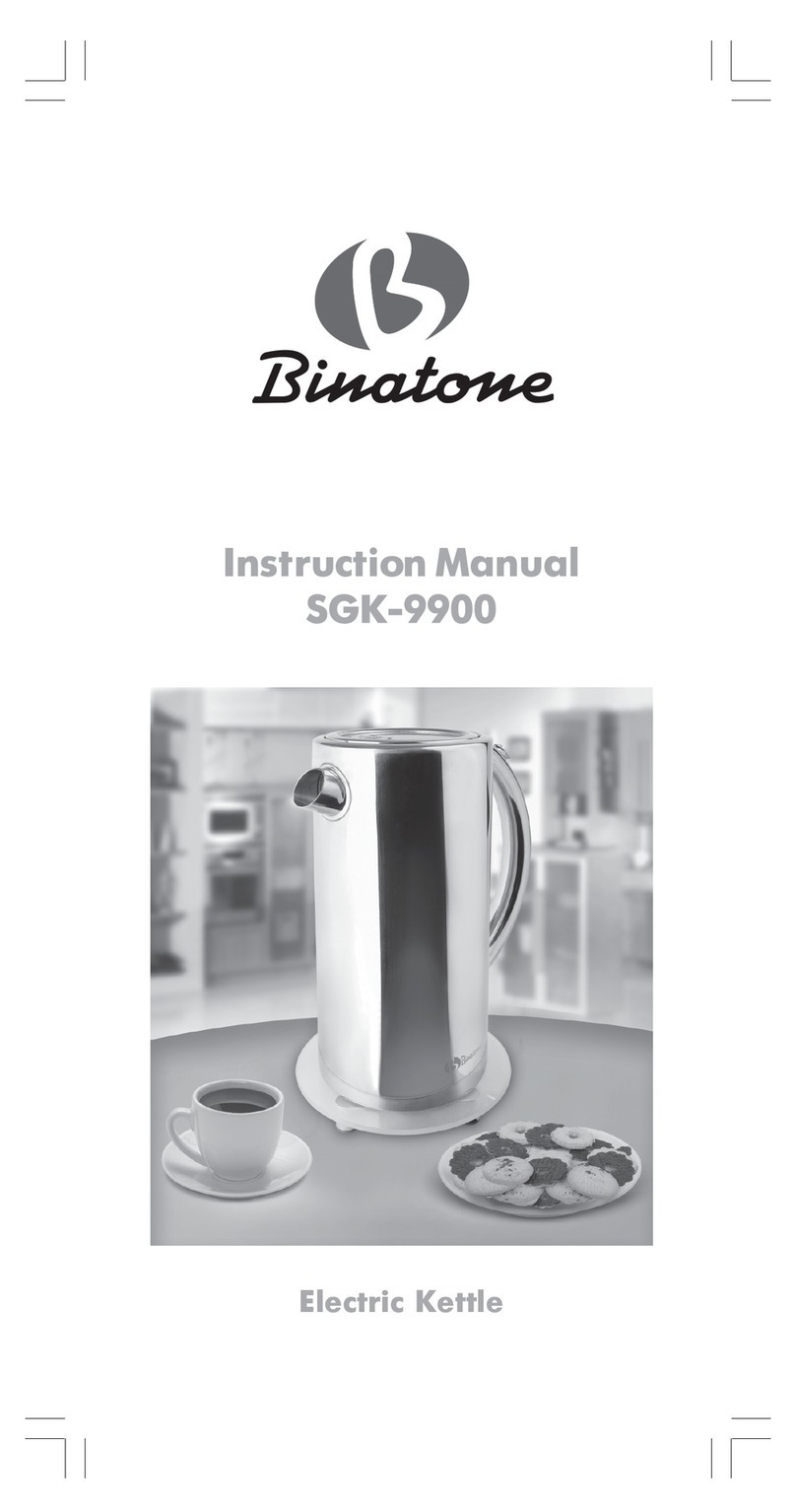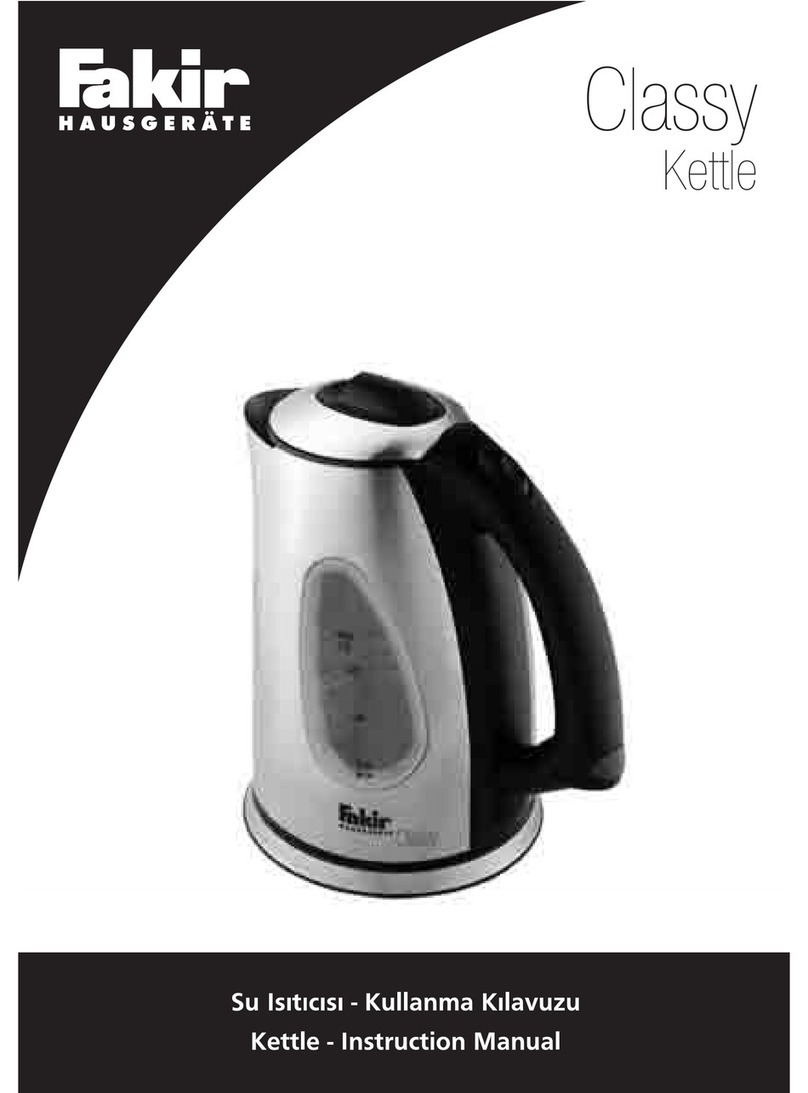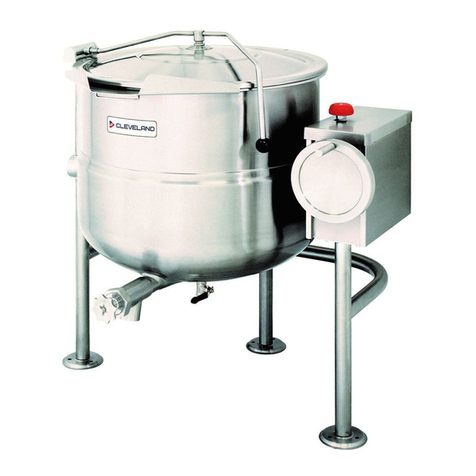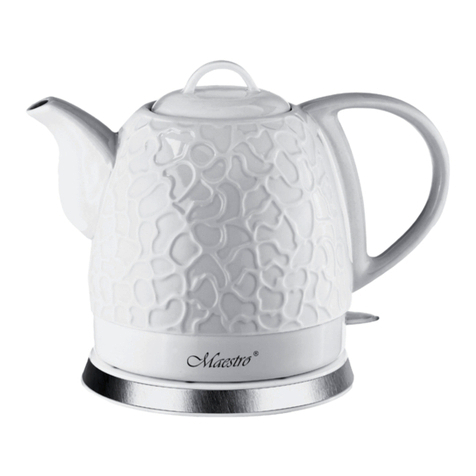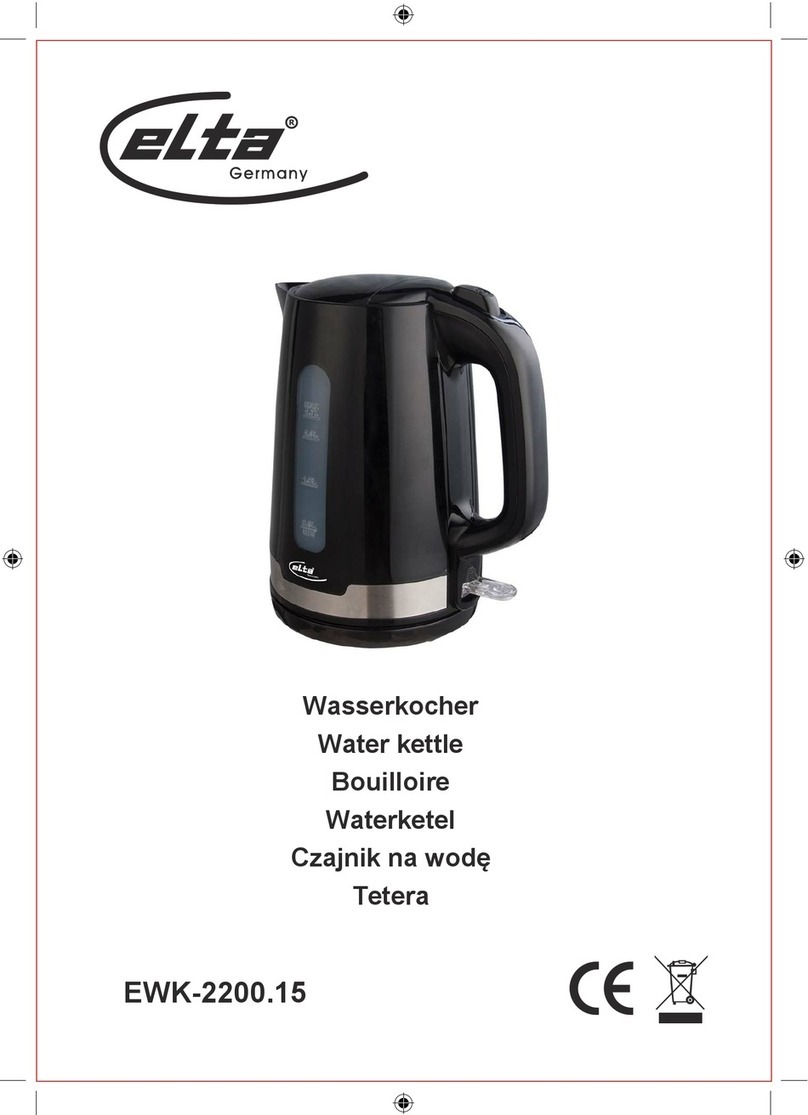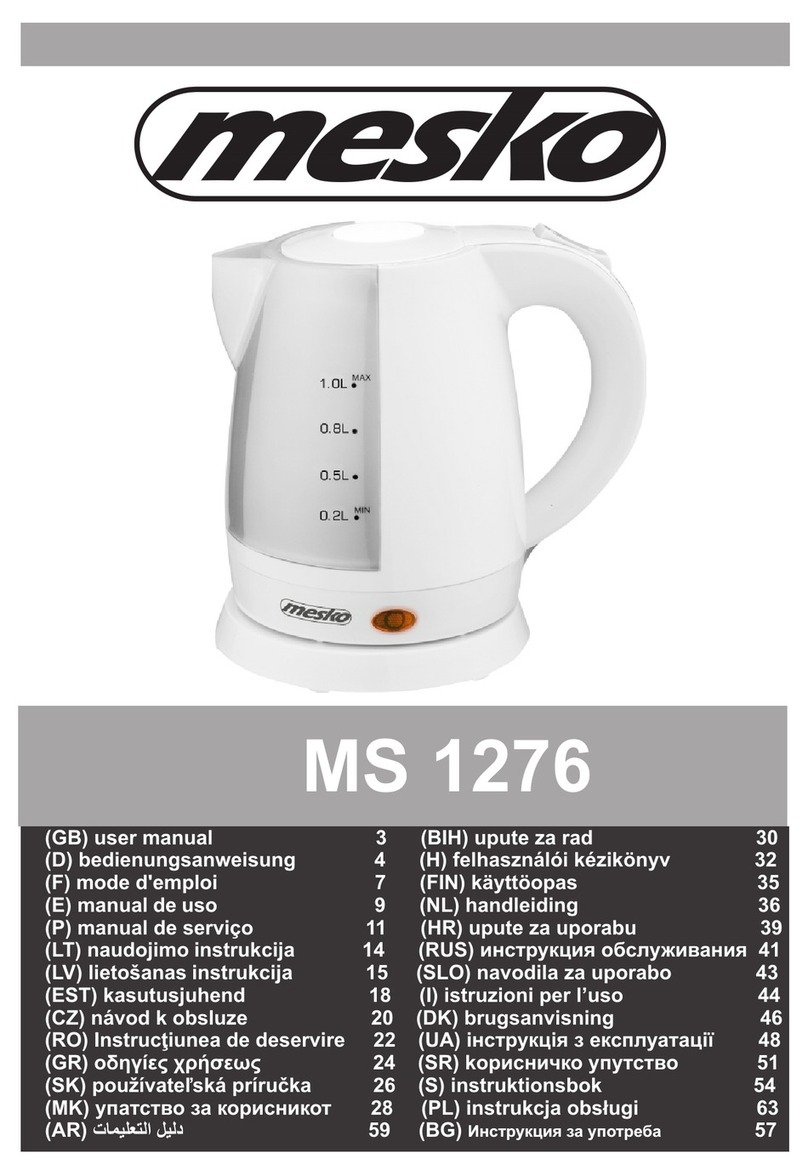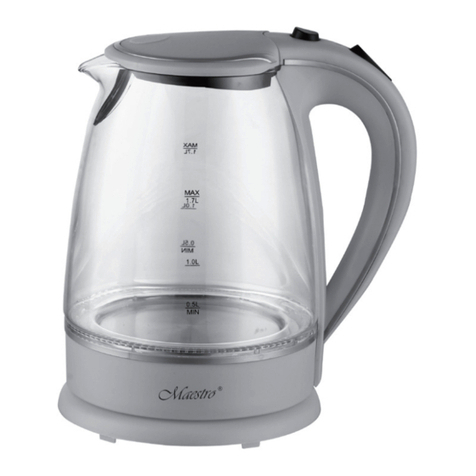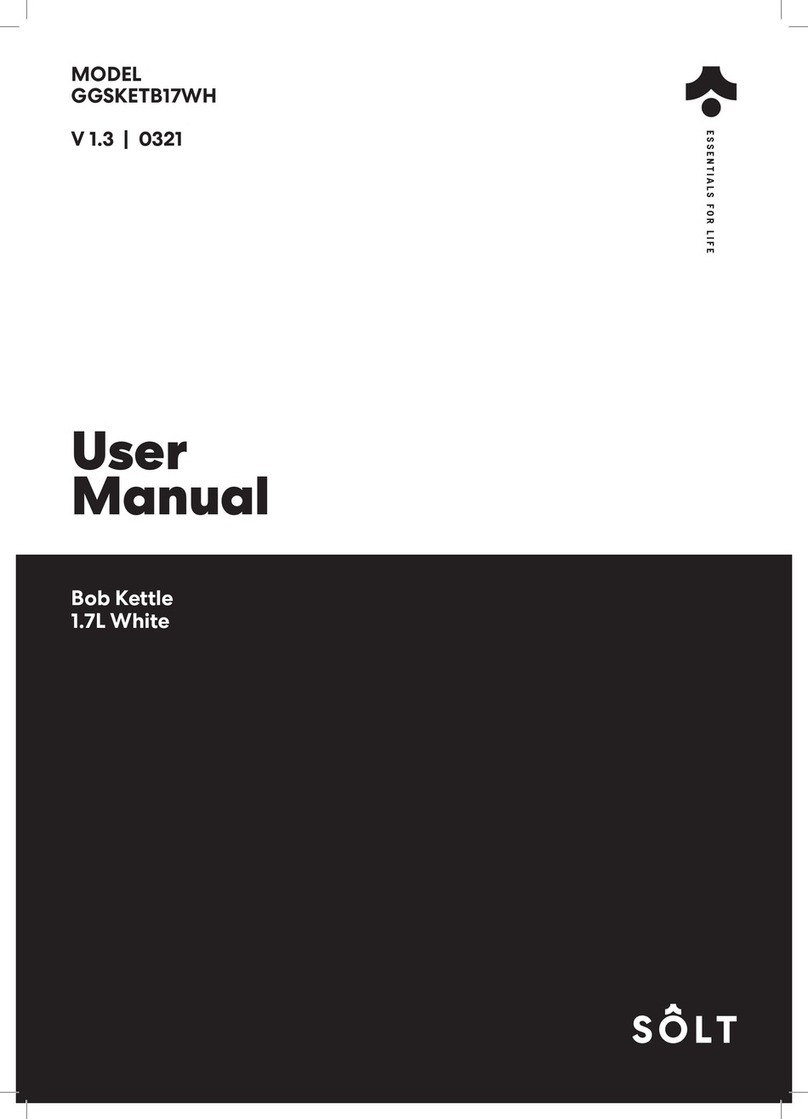
5OPERATION
Cooking Facts for Steam Jacketed Kettles
A Steam Jacketed Kettle is a stainless steel kettle jack-
eted or encapsulated by a second outer kettle, creating
a space between the two kettles. Cooking is achieved by
allowing steam to ow within this space. The jacket or
outer kettle usually covers 2/3 of the inner kettle, although
some kettles are fully jacketed
The steam owing in the space between the kettles con-
denses on the cold inner kettle wall and releases heat
through the wall to the food in the kettle. The condensate
drains to the bottom of the kettle and is released through
a steam trap without any loss or variation in steam pres-
sure. The amount of steam allowed to ow Into the Jacket
controls the heat of the kettle. In use, the Steam Jacketed
Kettle provides consistent heat distribution and is energy
ecient using steam only to maintain pressure, unlike top
of the range cooking in which energy (gas or electricity) is
used during the entire cooking process.
Steam Jacketed Kettles can sauté, simmer, or boil a
wide variety of products, such as soups, gravies, sauces,
pasta, stews, mixed casserole type dishes, vegetables,
shellsh, cereals, hot beverages, and puddings. A Steam
Jacketed Kettle will not burn foods. However, foods that
caramelize at relatively low temperatures, such as eggs
and milk based products, will coat and cook onto the
sides of the kettle. Care should be taken to use the small-
est ow of steam, to lessen the possibility of scorching
these products. To achieve this, allow products to come
up to desired temperature, stirring frequently, then turn o
steam ow and gradually turn on a small ow of steam -
just enough to allow food to cook.
Steam Jacketed Kettles eliminate much range top cook-
ing and greatly reduce the number of pots and pans re-
quired. Because they are made of stainless steel, they
are durable, non-porous and easy to clean.
• Estimate actual cooking capacity of Steam Jacketed
Kettles at 3/4 of its volume, to allow stirring without
spillage.
• Plan an adequate drain arrangement. This is very
important for ease of use and to minimize wet oors.
A grated gutter type drain located in front of the
kettles is preferred as it eliminates the hazards of
tripping over a curb or stumbling into a recessed
drain area.
• Locate a source of water (swivel faucet or exible
hose type) near the kettle to facilitate lling and
cleaning.
• Cover products whenever possible to save energy.
Covered water boils 25 to 30% faster.
• Use the tangent draw o valve to drain o products
from the kettle such as sauces and puddings, or
cooking liquids that are being discarded (as in the
case of the water used to cook pasta)
• Remove the tangent draw o valve after each use
for cleaning, using a brush to clean draw o as
bacteria will readily multiply in this area if it is not
thoroughly cleaned.
• Use the optional solid kettle disk when product is not
going to be dispensed through the draw o valve,
and the perforated disk when draining o liquids
through the draw o valve and retaining the solid
product in the kettle.
Figure 3










